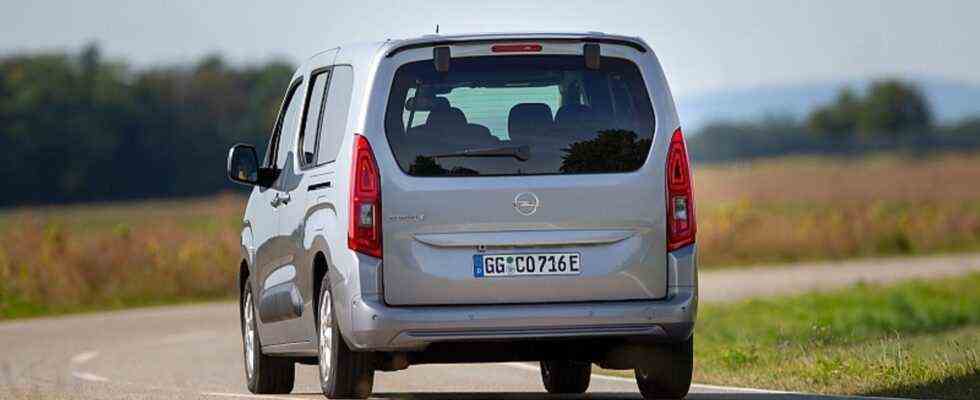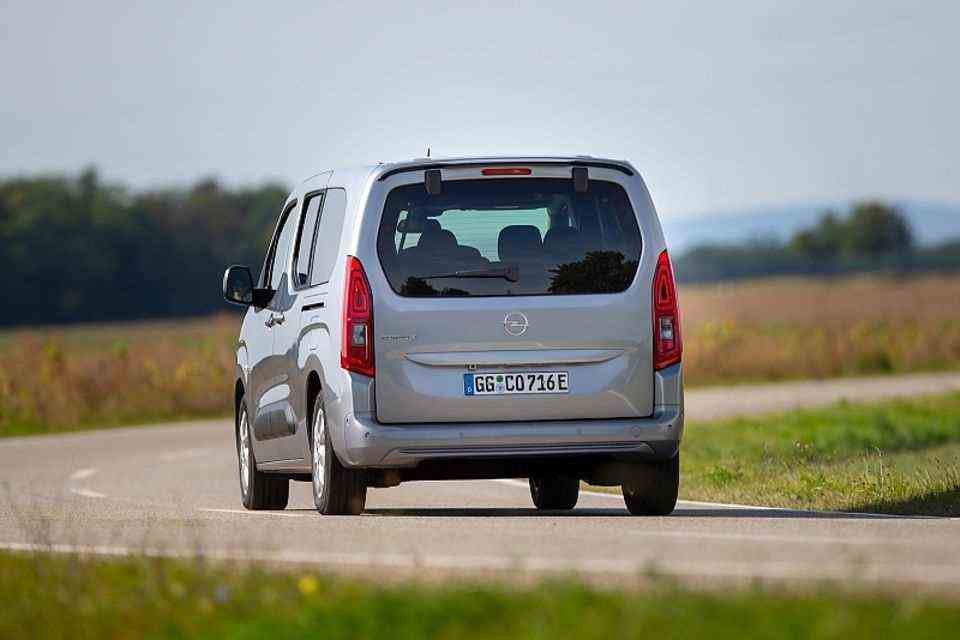Opel Combo-e Life
Family outing
Opel Combo-e Life
© press-inform – the press office
Even if everything relies on electric drives, it looks comparatively thin with family vans. A compact family transporter like the Opel Combo with electric drive is currently all alone, apart from its French sister models.
In the 1990s and early 2000s, high-roof station wagons such as a VW Caddy, Citroen Berlingo or Renault Kangoo were all the rage among family customers. They have never been beautiful, but they are always practical and inexpensive. Two child seats and a lot of luggage easily fit into the rolling ski boot and the sliding doors make loading and unloading luggage and people easier than with any station wagon. But then came the big SUV trend and family friends went downhill. The high-roof combos were unsexy and mostly floppy motorized – many customers switched and turned their backs on the practical transport masters. In the meantime, the market has stabilized at a significantly lower level and commercial customers in particular ensure that high-roof models remain an issue in the range of many car manufacturers.
But when it comes to electric drives, Renault Kangoo, Mercedes Citan, VW Caddy and Co. are currently looking bleak. Stellantis is now out of this series with his three-pack of Opel Combo-e, Peugeot Rifter and Citroen Berlingo. The variable Combo Life is the first model to be available as an electric version; Visually indistinguishable from its combustion brother and only in one engine variant in the range. The drive package is the same that all electric models from the Stellantis Group are currently getting implanted. The French do not currently have a selection that is common with other brands. But in a family van like the Combo Life, the 100 kW / 136 PS / 260 Nm electric motor with its battery pack fits well into the picture, because sporty motorized vehicles never want to be on the road in this league anyway. However, the battery capacity of 50 kWh is all too meager, because the maximum range of the high-roof station wagon is just 280 kilometers, even under ideal conditions. The standard consumption is an impressive 22.4 kWh per hundred kilometers. In winter with consumers switched on, it quickly becomes well under 200 kilometers and then the return trip to the mother-in-law or a mountain tour becomes all too tight. In half an hour, the Opel gains up to 80 percent of its range on a 100 kW fast charging station. But that’s barely more than 220 kilometers. OK in the city area – beyond that, significantly too little.
When it comes to maximum speed, the combo user has to limit himself significantly. Even if you are not a speeder, the 135 km / h top speed is likely to be too little to swim along quickly on the autobahn. So it is better to decide for operation in the city or on the country road and here the Opel Combo-e can convince not only with its variable interior. It is available in two body lengths of 4.40 and 4.75 meters and not only those who want to use the option of seven seats should be able to make friends with the long version. Apart from the Opel steering wheel and the digital instruments, there is the familiar arrangement of the Citroen Berlingo inside. Everything clearly arranged, unfortunately anything but valuable, but easy to use with lots of shelves and lots of space. The loading volume is gigantic. Even the short version has a capacity of at least 597 liters behind the two rows of seats, while the Combo-e Life with a long wheelbase has a generous luggage volume of 850 liters. With the rear seats folded down, the volume even increases to 2,126 or 2,693 liters.
When it comes to comfort, you shouldn’t expect the features of the widely used SUVs, because the Opel Combo Life is unmistakably also an electric model from a light commercial vehicle. So the seating comfort in the front and especially in the back is manageable. At the front there is only one-stage seat heating and, unusually for an electric car, there is no practical seat heating in the rear, as well as an electric tailgate or several USB slots for tablets and smartphones from the youngsters. On the other hand, the entertainment system’s WLan radio honeycomb means that you can surf the web without any problems while driving.
When it comes to safety equipment, there is a solid basis with the lane departure warning system, blind spot warning system or the fold-out head-up display. Unfortunately, the LED headlights, which have long been in keeping with their status and are not even available for a surcharge, are missing and so the Opel Combo-e shines more than unusual for an electric vehicle with tired halogen eyes. This is not only annoying in view of the stately price, because the Opel Combo-e starts in the narrow basic equipment at an impressive 38,100 euros. The better equipped Ultimate variant costs as much as 43,100 euros. For comparison: a well-equipped VW Caddy with an economical 122-hp diesel starts at around 26,000 euros with moderate equipment and costs just under 35,000 euros with the top equipment. On request, there is a seven-speed dual clutch transmission or all-wheel drive.


